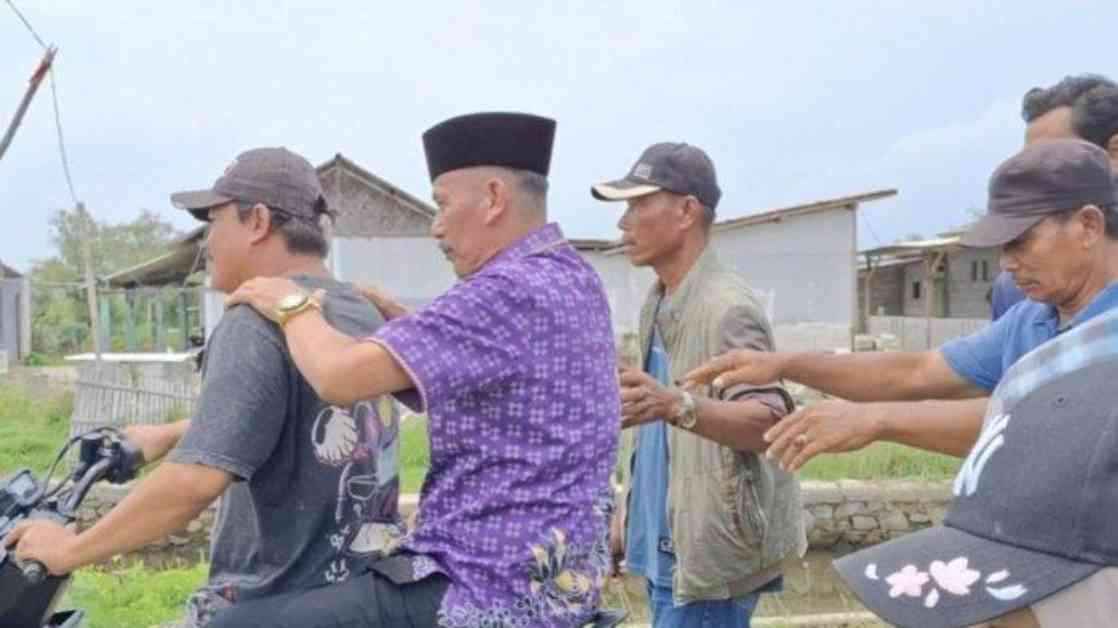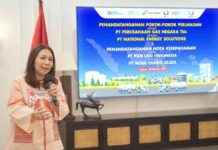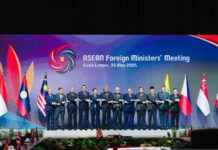In the quiet village of Kohod, located in Pakuhaji, Tangerang Regency, a storm is brewing. The village chief, Arsin bin Asip, has recently come under scrutiny due to his involvement in a controversial land dispute surrounding the Tangerang waters in Banten. As allegations of his role as the mastermind behind the fraudulent issuance of Building Rights Certificates (HGB) for coastal areas in his jurisdiction are brought to light, a deeper dive into his lifestyle reveals a stark contrast between his official duties and personal indulgences.
With a fleet of luxury vehicles including a Honda Civic, a Mitsubishi Pajero, and a Rubicon, Arsin’s opulent lifestyle has drawn the attention of the community. His residence on Jalan Kalibaru in Kohod Village is a sight to behold, standing out conspicuously from the neighboring houses. Nestled beneath the highway, his home boasts a grandeur that is hard to miss, marked by a distinctive red and white flag with the national emblem of Garuda emblazoned on the ceiling. The expansive white-tiled terrace is spacious enough to accommodate a vehicle, a testament to the extravagance that Arsin flaunts with pride.
Despite his wealth and status, Arsin’s demeanor reflects a certain arrogance, as witnessed by Aman Rizal, Chairman of the Arsin Capture Movement Group (Getar). Rizal describes Arsin as a brash individual who takes pleasure in showcasing his material possessions, particularly when making donations to religious activities. This behavior has earned him a reputation for being ostentatious and self-aggrandizing, a stark departure from the humility expected of a village chief.
Uncovering the Dark Side
As the allegations against Arsin continue to mount, his facade of prosperity begins to crumble, revealing a darker underbelly to his character. What initially appeared as a lavish lifestyle is now tainted by suspicions of corruption and deceit, casting a shadow over the once-respected village chief. The accusations of his involvement in the illicit issuance of land certificates raise questions about the extent of his influence and the depths of his deception.
While Arsin may have presented himself as a benevolent figure, his actions have painted a different picture, one that challenges the perceptions of those around him. The juxtaposition of his ostentatious displays of wealth with the underhanded dealings behind closed doors underscores the complexity of human nature and the intricacies of power dynamics in small communities. As the truth unravels, the villagers of Kohod are left grappling with the realization that their trusted leader may not be the pillar of integrity they once believed him to be.
A Lesson in Humility
The saga of Arsin serves as a cautionary tale, reminding us of the dangers of unchecked power and the seductive allure of wealth. It prompts us to reflect on our own values and priorities, urging us to consider the true measure of success and virtue. In a world where appearances can often be deceiving, it is essential to look beyond the surface and seek out the substance beneath the facade.
As we navigate the complexities of human nature and the intricacies of societal dynamics, the story of Arsin offers a glimpse into the fragility of reputation and the resilience of truth. It is a reminder that humility, honesty, and integrity are the cornerstones of a life well-lived, far more valuable than any material wealth or fleeting fame. As we ponder the fate of Arsin and the legacy he leaves behind, let us strive to embody the virtues that define us as individuals and as a community.
In the heart of Kohod Village, a tale of ambition, betrayal, and redemption unfolds, weaving a tapestry of human frailty and resilience. As the sun sets on Arsin’s reign, the villagers are left to ponder the lessons learned from his downfall, a cautionary tale for generations to come. The echoes of his legacy reverberate through the streets, a reminder of the enduring power of truth and the inexorable march of justice.






















